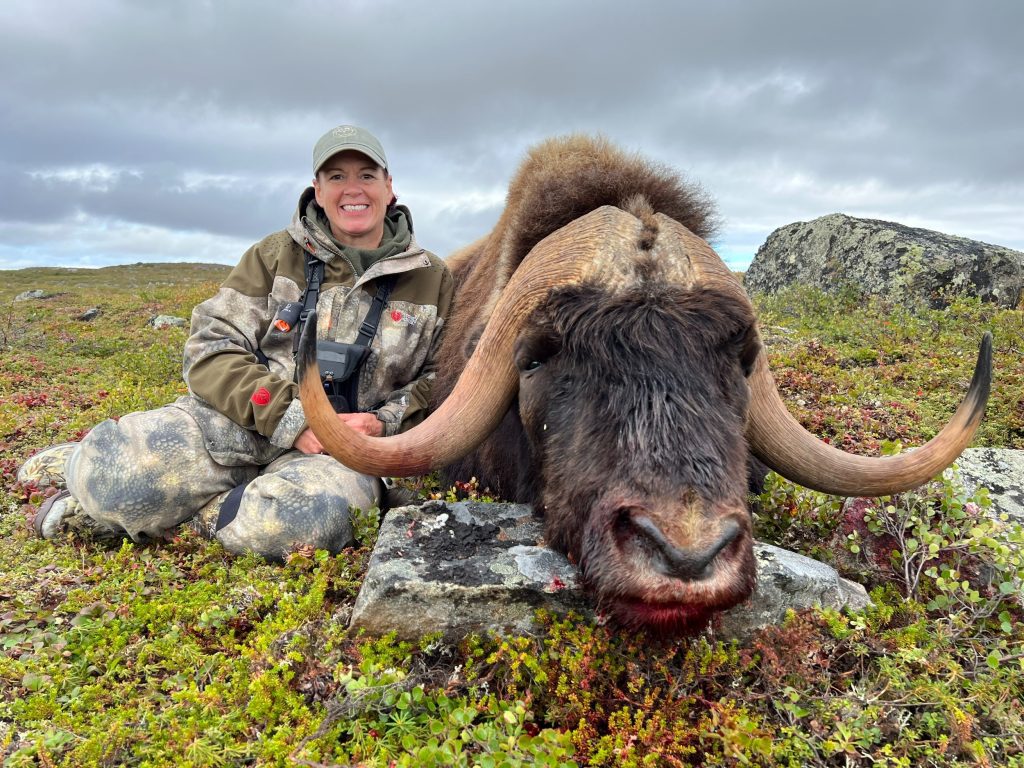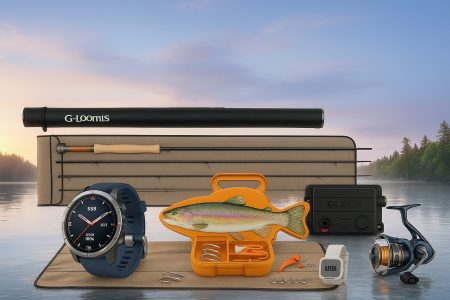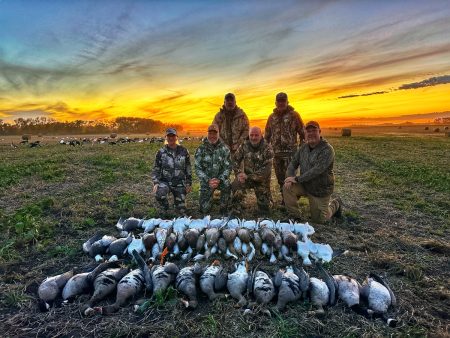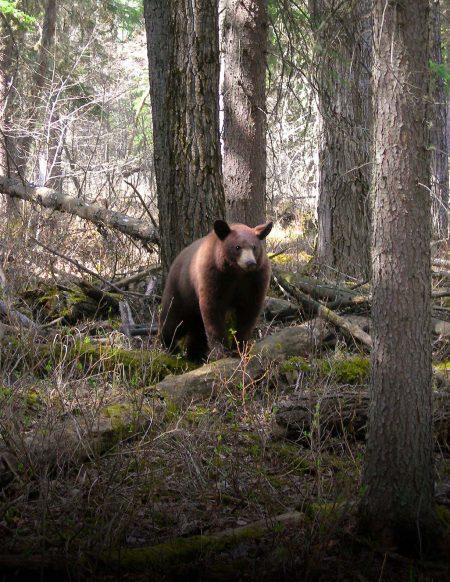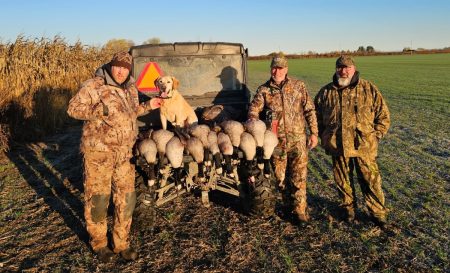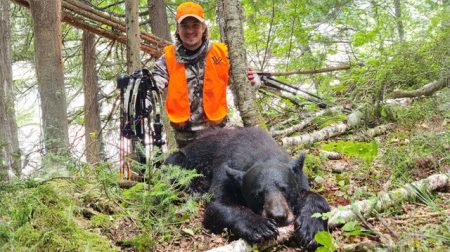Hunting in the Canadian Arctic
It conjures up images of snow-covered tundra, endless darkness and frigid temperatures; and during the winter months, this is relatively accurate. It is a desolate land, with few inhabitants. Only the hardiest call this land home. The arctic’s population is typically confined to small Inuit villages during the winter, but during the summer months, many go out to live off of the land and stock their larders for the long cold winter ahead, just as their ancestors have done for the past thousand years. These are some of the last, true subsistence hunters left in North America. They have a connection to the land, and spending time with its inhabitants must be experienced.
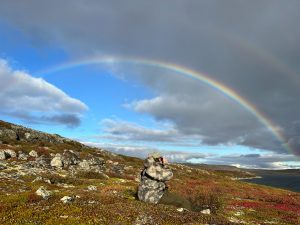
The Arctic’s short summer is in stark contrast to the long winter, with warm temperatures, endless daylight, and abundant flora and fauna. An arctic summer is a rebirth of sorts. Not only does the land come alive, so too do arctic inhabitants. At one time, most arctic hunts were confined to March and April, when the days are getting longer but temperatures can still dip down to the -40s. I did a muskox hunt out of Paulatuk several years ago in March, and the warmest temperature we saw was -26. It was more of an endurance test than a hunt. Now, many areas are offering summer and early fall hunts, when temperatures are far more pleasant. It’s on these hunts where one can truly come to appreciate what a special place the arctic is.
While hunting in the arctic in a way of life for the Inuit people, there is a developing outfitting industry that allows southern hunters a look into this fascinating culture. Tags are typically controlled by local Hunter and Trapper Organization and guides and outfitters are the community hunters. In these villages, there is usually a group of younger men that do the bulk of the hunting, and the meat is shared with all members of the community. There is a quota for certain species, and while the hunters in the community use some of the quota for themselves, a percentage is sold to sport hunters. The precious meat remains in the community, just as it would if the animals were taken by the community hunters, but there is also a considerable source of revenue brought into these typically impoverished communities. It’s very similar to the African model in many aspects.
I had the opportunity to go on a walrus hunt last year in the community of Coral Harbour. Friend and arctic outfitter, Gary Adams of Canadian High Arctic Adventures, was working with a new local outfitter and needed a couple of hunters to go and check it out. It was a hunt that had long been on my bucket list, so of course I jumped at the opportunity. I’ve been enough exploratory hunts to know that they often don’t work out but was keen to give it a try.
Gary met me at the tiny airport when I arrived and indicated that we had a brief break in the weather and that we’d be heading out in a couple hours. It was nearly 80 miles by boat to the area we’d be hunting, and he instructed me to throw my sleeping bag in, just in case. It was an absolutely spectacular July day, and I was hoping we could just ease into the hunt but was also well aware of how nasty the waters of Hudson Bay could be. With the water flat calm, I understood the urgency of getting underway.
The first thing that struck me, was how professional our young Inuit guides were. Troy, our outfitter, was a second-generation outfitter in the area and you could tell he took pride in his craft. I peppered him with questions on the three- and half-hour journey to Walrus Island. While not my first trip to the arctic, this would be my first encounter with wild walrus. He graciously answered each question and filled me in how important the outfitting industry was to Coral Harbour. With calm waters and Troy’s insightful conversation, it seemed like no time, and we arrived at the island. While there were no walruses in sight, we caught a glimpse of a couple polar bears feeding on a walrus carcass. My plan was to take a big old bull walrus on a spot and stalk hunt on the island, but it now became apparent that we weren’t the only predators there and we’d need to watch our back.
We continued to cruise around the island and soon came upon huge herd of walruses. The first thing that struck me was the smell. Walruses live primarily on clams and can dive over a thousand feet to get them, and their diet didn’t smell any better coming out than going in. Even though it was my first walrus encounter, the males were quite easy to distinguish from the females by their much heavier and longer tusks. As we continued to cruise along in the boat, we saw well over a thousand of them and while most of the larger males appeared to have similar tusks, there were a couple that obviously stood out. We headed back toward what we figured was the largest to devise a plan.
Finding a landing spot for the boat wasn’t easy but we finally found a crack in the rocks we could nose the boat into and then scramble up them from there. It was several hundred yards from the group of walruses. Troy warned me to watch my footing, as the walrus excrement that covered the rocks was as slippery as it was smelly. He said that if one were to slip and go into the water, that the walruses would instantly be on you and likely kill you. I placed each step with due caution. We head up the steep rocks to a point that offered a good vantage and could see the big bull about 300 yards away. We quickly closed the distance to about 40 yards. The herd was getting nervous at this point and Troy cautioned that they were preparing to move to the water. I found the big bull in the rifle scope and settled the crosshair right where the skull met the neck. Or at least that’s where I figured it was on the massive 3,000-pound animal.
At the report of the 30-06, the walrus slumped and then laid motionless on the flat rocks. I was relieved. If he’d made it to the water, there was a chance he could be lost, plus now, he was in an ideal location to work on. Then, he gave one more involuntary twitch and the massive beast rolled down the rocks into a large crevasse. Now the task of cutting him into manageable sized pieces just became a lot more difficult, especially as the tide was rising. But the young Inuit men got to work and about three hours later, the walrus meat was loaded in the boat and we were headed back to the community. As looked out over the waters of Hudson Bay at the midnight sun, I realized how special this hunt was and how blessed I was to have experienced it.
While walrus hunting is confined to the summer months, more hunters are starting to take advantage of the long, warm days, and hunting other species that are more traditionally hunted in the winter or spring, during the summer and early fall. These include polar bear, muskox, and barren ground grizzly. The winter/spring hunts for these animals are often more a test of endurance test than a hunt and there is something special about the long days of summer in arctic. Central barren ground caribou is another arctic species that can be hunted in August and September.
Polar Bear Hunting:
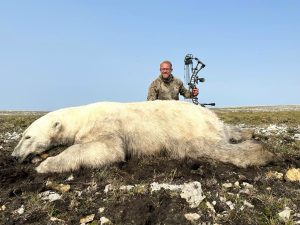
Polar bear hunts run the entire year in Nunavut but most of the summer hunts are conducted in August and early September. This is an easy hunt to combine with walrus as well. Hunts are conducted by boat and ATV and hunters will typically be far away from any settlements, and staying in wall tents. Summertime temperatures are often in the 70s and the days are still quite long at this time of year. This is in sharp contrast to the winter hunts, typically conducted by dog sled with snowmobile back up, where temperatures are in the -20s to -40s. Polar bear may also be hunted in the Northwest Territories but seasons there are limited to the winter/spring season and hunts must be conducted by dog sled. Unfortunately, polar bear parts may not be imported into the U.S. but many Americans still hunt these magnificent bears each year, just to experience the arctic.
Muskox Hunting:
While a decade ago, most muskox hunts were conducted in the spring, more outfitters are now starting to offer summer and early fall hunts. Early September is the most magical time of the year to be on tundra, as vegetation turns from a vibrant green to vivid reds and oranges almost over night. This is also the time of year when muskox rut and you can see the deafening head crashes of the big bulls vying for the right to breed. Seasons vary throughout the NWT but most open in early to mid August. The season is open 365 days in Nunavut. Most hunts are conducted by boat at this time of the year, by cruising lakes and rivers and glassing for muskox inland. Not only are muskox an amazing trophy, but they also provide some of the finest table fare in the arctic. This is an ideal hunt for both rifle and archery hunters.
Walrus Hunting:
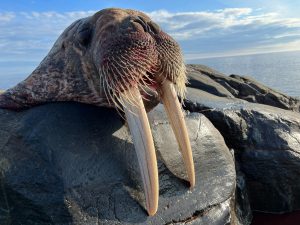
This hunt is 100% about experiencing the arctic and sharing a traditional hunt with the local Inuit people. The most challenging part of this hunt is getting to where the walruses actually live, and that’s often not easy, especially when seas are rough. They aren’t overly afraid of humans so getting close enough for a shot isn’t typically an issue and there are usually hundreds of them. Most of the established Inuit guides have very seaworthy boats and are well experienced at dealing with these massive creatures. Like polar bears, walrus parts can’t be imported into the USA but excellent replicas of the tusks from your actual walrus can be made, as can replicas of the entire animal.
Barren Ground Grizzly Bear Hunting:
While technically not a sub species, the grizzlies that call the barrens home are unique. Their population and distribution are expanding in both Nunavut and the NWT. These bears are somewhat migratory, following caribou herds, their primary source of prey. Like polar bears, few have had much contact with man and can be quite dangerous. Hunts are most often conducted on snowmobile, with hunters looking for tracks in the snow as the bears emerge from their dens. While a large boar can weight upwards of 700 pounds, these bears are typically smaller in stature than other grizzly bears in North America, most likely due to the long winters in the arctic. As I write this, it sounds as though tags may become available in additional units in the NWT, that will pair well with fall muskox hunts. Wolf and wolverine can usually be added to these hunts as well. Contact
Central Barren Ground Caribou Hunting:
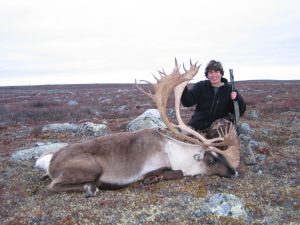
Hunts for these caribou were at one time extremely affordable and several hundred hunters pursued them in the NWT each year, with a liberal limit of two per hunter. But in 2013, the hunt was closed to non-residents, putting many outfitters out of business. Central barren ground caribou may still be hunted in Nunavut, however, although opportunity there has also been reduced, driving the costs up. I’ve done this hunt six times back when it was super affordable and just seeing these small-bodied caribou (a big bull weighs around 300 pounds) with nearly 400 inches of antler on their heads is a sight not soon forgotten. I remember seeing tens of thousands of caribou on some hunts. While the huge herds are rarer, this hunt comes with high success rates. Caribou can be hunted in August when antlers are still in velvet, but most hunters choose September when antlers are hard, and capes are at their prime.
For information on these hunts – contact Gary and his team. Canadian High Arctic Adventures
Gearing Up: Summer and early fall hunts in the arctic offer similar conditions to those found for western mountain hunts in the U.S. Lots of layers and good waterproof boots are a must but there’s no need for the specialized arctic gear required for summer and fall hunts. If forced to pick one rifle to hunt all of the Arctic species mentioned, it would be a 300 Winchester Magnum. Sako’s new 90 Adventure would be my choice, with a Zeiss V4 4-16 x44 scope and Hornady Outfitter ammunition with 180-grain CX bullet.
Per our affiliate disclosure, we may earn revenue from the products available on this page. To learn more about how we test gear, click here.






